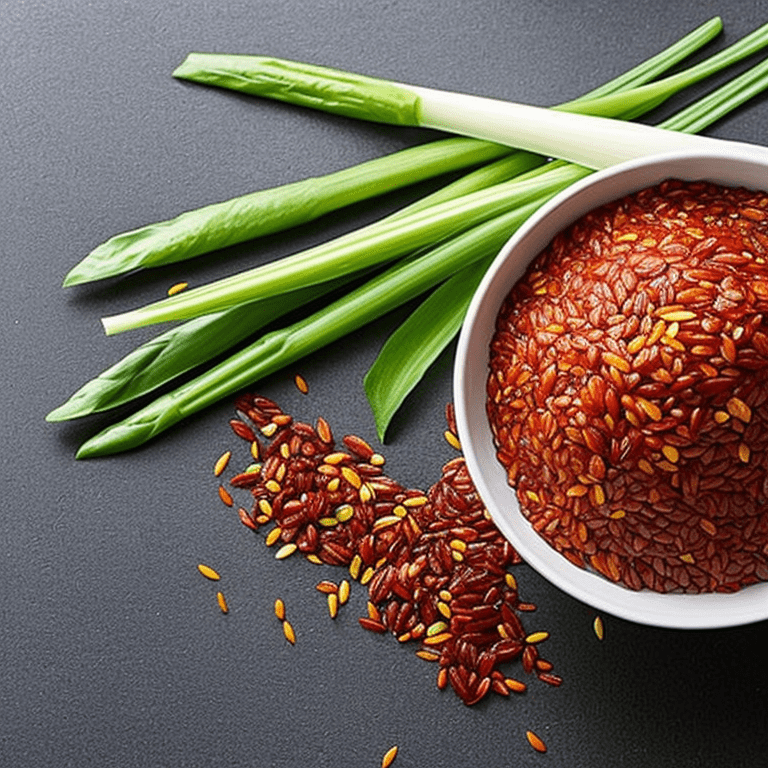Explore the diverse world of Vietnamese red rice delicacies in this insightful blog post. Learn about traditional cooking methods, regional varieties, and cultural significance surrounding Vietnamese red rice dishes.
Are you a food enthusiast looking to tantalize your taste buds with exotic flavors from around the world? If so, youre in for a treat as we delve into the vibrant world of Vietnamese red rice delicacies. From fragrant red rice dishes to mouthwatering traditional recipes, Vietnam offers a diverse culinary landscape that is sure to captivate your senses.
In 2024, embark on a culinary journey like no other as we explore the rich heritage and unique flavors of Vietnamese red rice delicacies. Whether youre a seasoned foodie or just curious to try something new, get ready to discover the colors, aromas, and textures that make Vietnamese cuisine truly special. Join us as we navigate the bustling street markets of Hanoi, savoring the warmth of freshly prepared red rice dishes that reflect the countrys cultural tapestry.
The Health Benefits of Vietnamese Red Rice
Vietnamese Red Rice is a highly nutritious grain that offers a wide array of health benefits. Rich in antioxidants, vitamins, and minerals, this variety of rice is known for its distinctive red color and nutty flavor.
What is Vietnamese Red Rice?
Unlike white rice, Vietnamese Red Rice undergoes less processing, retaining more of its natural nutrients. This makes it a healthier option as it contains higher levels of fiber, iron, and zinc.
Is Red Rice Unhealthy?
On the contrary, red rice is considered a healthier alternative to white rice due to its lower glycemic index and higher nutrient content. It can help regulate blood sugar levels and promote overall well-being.
Vietnamese Red Rice Recipe
One popular way to enjoy Vietnamese Red Rice is by preparing it as a fragrant rice dish seasoned with herbs and spices. You can find a delicious recipe here.
Red Cargo Rice vs. Red Rice
While both red cargo rice and red rice share similar health benefits, red rice is known for its unique flavor profile and versatile culinary applications. Incorporating red rice into your diet can add a nutritional boost to your meals.
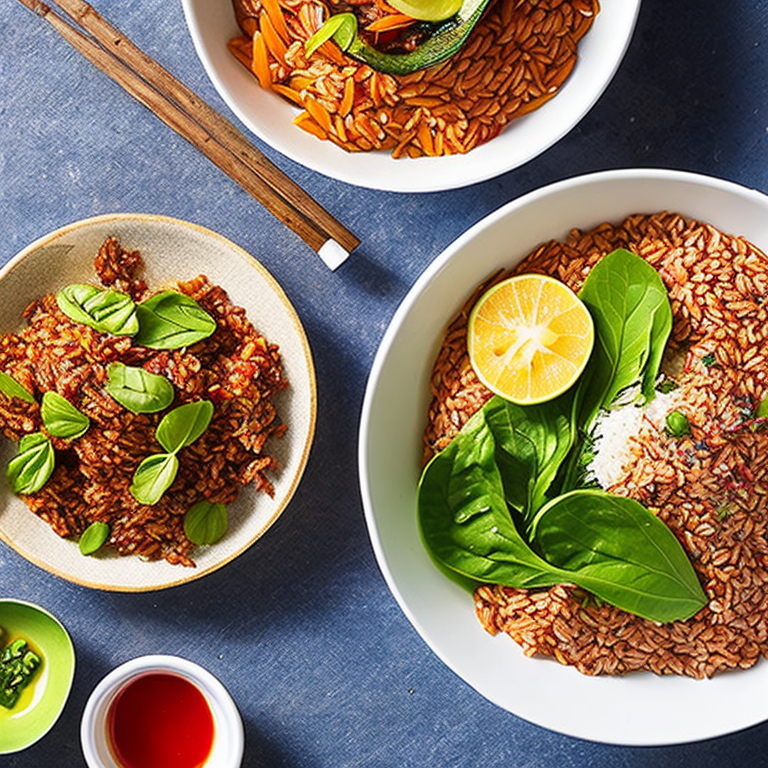
A Culinary Journey Through Vietnamese Red Rice Dishes
Vietnamese red rice, also known as Hong Deo or Gao Do, plays a pivotal role in Vietnamese cuisine, offering a unique taste and nutritional profile. This vibrant red-hued rice is not only visually appealing but also packed with health benefits.
The Nutritional Profile of Vietnamese Red Rice
Vietnamese red rice is rich in antioxidants, vitamins, and minerals, making it a healthy choice for those looking to enhance their diet. It contains higher levels of nutrients compared to white rice, offering a boost to overall well-being.
Popular Vietnamese Red Rice Dishes
From traditional favorites like Com Lam (bamboo-cooked rice) to modern adaptations like red rice salad bowls, Vietnamese cuisine showcases the versatility of this unique ingredient. Each dish reflects the culinary expertise and cultural heritage of Vietnam.
Exploring Vietnamese Red Rice Recipes
Whether youre looking to make savory red rice porridge or indulgent red rice pudding, there is no shortage of creative recipes to try. The distinct nutty flavor of red rice adds a delightful twist to both sweet and savory dishes.
For those looking to elevate their cooking skills and expand their culinary horizons, experimenting with Vietnamese red rice is a flavorful journey worth embarking on.
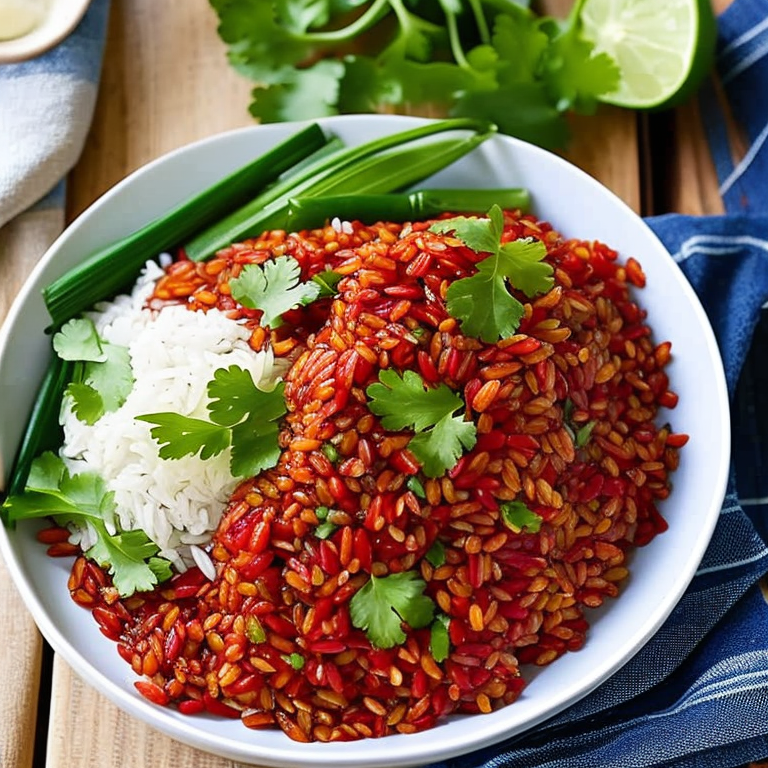
Cooking Tips and Tricks for Vietnamese Red Rice
Vietnamese Red Rice, a nutritious and flavorful alternative to white rice, offers a unique culinary experience. To enhance your dishes featuring this vibrant grain, consider these cooking tips and tricks:
Rinsing and Soaking
Prior to cooking, rinse Vietnamese Red Rice thoroughly to remove excess starch. Soaking the rice for at least 30 minutes before cooking can help improve its texture and ensure even cooking.
Proper Water Ratio
When cooking Vietnamese Red Rice, maintain a water-to-rice ratio of 1:2 to achieve the desired consistency. Use slightly less water for a firmer texture or additional water for a softer finish.
Steaming Method
To preserve the nutritional value and distinct flavor of Vietnamese Red Rice, consider using a steaming method instead of boiling. Steaming helps retain moisture and results in fluffy, separate grains.
For more culinary inspirations and delectable recipes, check out the best red pepper flakes of 2024 and crispy spicy tuna delights recipes.
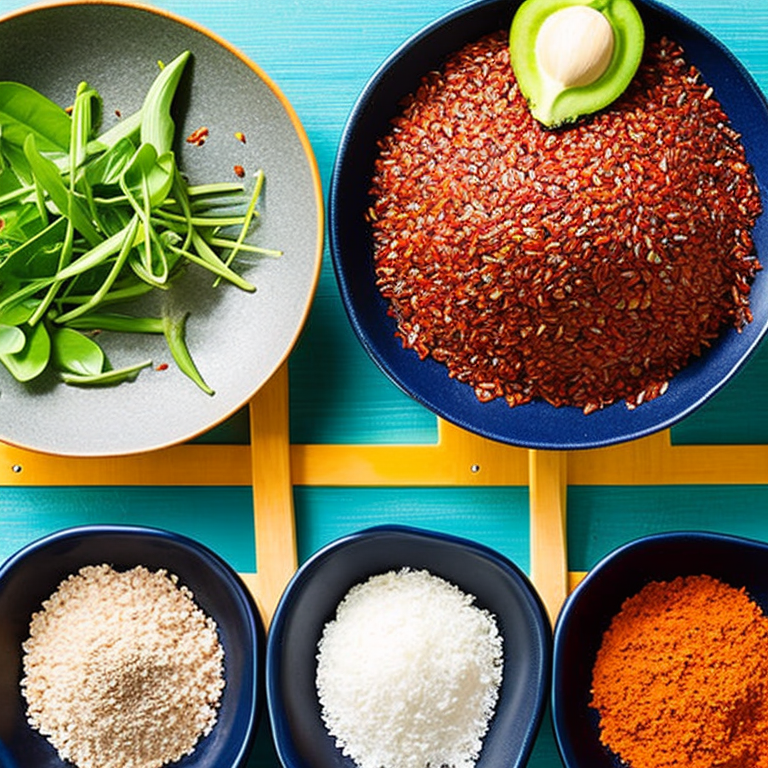
Traditional vs. Modern Cooking Methods for Red Rice
When it comes to exploring the world of Vietnamese red rice delicacies, understanding the traditional and modern cooking methods is essential. Traditional cooking methods for red rice involve techniques passed down through generations, emphasizing slow cooking and preserving the natural flavors of the rice.
Traditional Cooking Methods
In traditional Vietnamese cuisine, red rice is often steamed in a clay pot, allowing the rice to absorb the flavors of any accompanying ingredients such as herbs and spices. This method results in a rich and aromatic dish that is deeply rooted in Vietnamese culinary heritage.
Modern Cooking Methods
On the other hand, modern cooking methods for red rice often involve using kitchen appliances such as rice cookers or instant pots for convenience and efficiency. While these methods may not impart the same depth of flavor as traditional techniques, they are popular choices for busy individuals looking to enjoy the health benefits of red rice without the lengthy cooking process.
Whether you choose to stick to traditional methods or opt for a more modern approach, the key is to savor the unique taste and nutritional value of Vietnamese red rice in every dish you prepare.
Vietnamese Red Rice: Origins and Cultural Significance
Vietnamese red rice, also known as gao do, holds a special place in Vietnamese cuisine due to its rich history and cultural significance. This unique variety of rice is not only a staple food but also a symbol of tradition and heritage in Vietnamese cooking.
Historical Roots
The origins of Vietnamese red rice can be traced back to ancient times when it was cultivated by Vietnamese farmers as a source of sustenance. This type of rice was traditionally reserved for special occasions and celebrations, symbolizing prosperity and good fortune.
Cultural Significance
In Vietnamese culture, red is a color associated with luck, happiness, and success. Therefore, red rice is often featured in festive meals and ceremonies to bring blessings and auspiciousness to the occasion.
Moreover, Vietnamese red rice is cherished for its nutty flavor and chewy texture, making it a popular choice for various traditional dishes such as red rice porridge, red rice noodle soup, and red rice cakes.
Overall, Vietnamese red rice not only adds a vibrant touch to the dining table but also reflects the deep-rooted traditions and values of Vietnamese culinary heritage.

Red Rice Recipes to Spice Up Your Menu
Vietnamese red rice, also known as cám gạo lứt in Vietnamese, is a versatile and nutritious ingredient that can elevate your culinary creations. Lets explore some delectable Vietnamese red rice recipes that will add a burst of flavor to your menu.
Vietnamese Red Rice Salad
One popular way to enjoy Vietnamese red rice is in a refreshing salad. Combine cooked red rice with colorful veggies like bell peppers, cucumbers, and cherry tomatoes. Toss with a zesty dressing made from lime juice, fish sauce, and a dash of red pepper flakes for a spicy kick.
Red Rice Stuffed Bell Peppers
Elevate your stuffed bell peppers by using cooked Vietnamese red rice as the base. Mix the red rice with ground meat, onions, garlic, and your favorite seasonings. Top with a sprinkle of cheese and bake until the peppers are tender and the filling is bubbling.
Coconut Red Rice Pudding
For a sweet treat, try making coconut red rice pudding. Cook Vietnamese red rice in coconut milk and sweetened condensed milk until creamy and tender. Serve warm with a drizzle of honey and a sprinkle of cinnamon for a comforting dessert.
These Vietnamese red rice recipes are just a glimpse of the endless possibilities this nutritious ingredient offers. Get creative in the kitchen and enjoy the unique flavors of Vietnamese red rice in your everyday meals.
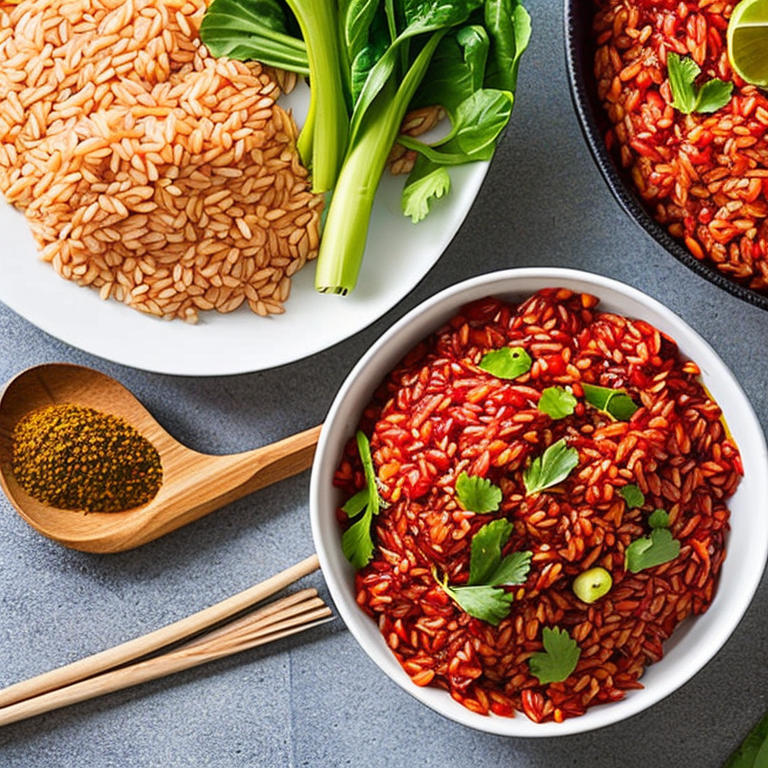
Incorporating Vietnamese Red Rice into Everyday Meals
When it comes to enhancing the nutritional value and flavor profile of your meals, Vietnamese red rice is a fantastic ingredient to consider. This unique variety of rice not only adds a pop of color to your dishes but also brings along a plethora of health benefits.
The Health Benefits of Vietnamese Red Rice
Vietnamese red rice is packed with antioxidants, fiber, and essential nutrients that promote overall well-being. Its rich red hue is attributed to its high anthocyanin content, a powerful antioxidant known for its anti-inflammatory properties. Consuming this rice can aid in digestion, boost immunity, and support heart health, making it a nutritious choice for any meal.
Cooking Tips and Tricks for Vietnamese Red Rice
For optimal results, rinse the rice thoroughly before cooking to remove excess starch. Use a ratio of 1:2 rice to water and let it simmer gently until tender. To enhance its nutty flavor, toast the rice in a dry pan before cooking. Experiment with adding aromatic herbs and spices like lemongrass, ginger, and garlic for a delightful twist.
Explore new culinary horizons by incorporating Vietnamese red rice into your everyday meals. Its unique taste and health benefits make it a versatile ingredient that can elevate any dish.
FAQs
What is Vietnamese Red Rice?
Vietnamese Red Rice, also known as Tam Xoan or Gao Do, is a type of rice with a distinct red husk and nutty flavor that originates from Vietnam.
How is Vietnamese Red Rice different from regular white rice?
Vietnamese Red Rice stands out due to its vibrant red husk, which contains antioxidants and nutrients like anthocyanins. It also has a slightly chewy texture and a nutty taste compared to regular white rice.
What are some popular Vietnamese Red Rice delicacies?
Some popular Vietnamese Red Rice delicacies include Red Rice Salad, Red Rice Pudding, Red Rice Porridge, and Red Rice Stir-fry with Vegetables and Tofu.
How is Vietnamese Red Rice cooked?
To cook Vietnamese Red Rice, rinse it well, then use a ratio of 1 cup rice to 2 cups water. Bring to a boil, then simmer for about 30-40 minutes until the rice is tender and fluffy.
What are the health benefits of consuming Vietnamese Red Rice?
Vietnamese Red Rice is rich in antioxidants, fiber, and essential minerals like iron and zinc. It can help support heart health, digestion, and overall well-being.
Where can one purchase Vietnamese Red Rice?
Vietnamese Red Rice is available at specialty Asian grocery stores, online retailers, and health food stores. It can also be found in some supermarkets in the international foods section.
Are there any traditional Vietnamese Red Rice recipes to try?
Yes, traditional Vietnamese Red Rice recipes include Xoi Gac (Red Sticky Rice with Gac Fruit), Com Lam (Bamboo Cooked Red Rice), and Vietnamese Red Rice Cake with Coconut.
What are some creative ways to incorporate Vietnamese Red Rice into everyday meals?
You can use Vietnamese Red Rice as a base for Buddha bowls, in sushi rolls, as a side dish for grilled meats, or in soups and stews for added flavor and nutrition.
Can Vietnamese Red Rice be used in desserts?
Absolutely! Vietnamese Red Rice can be used in desserts like rice pudding, rice cakes, and even in sweet rice dumplings for a unique twist on traditional treats.
Is Vietnamese Red Rice gluten-free?
Yes, Vietnamese Red Rice is naturally gluten-free, making it a great alternative for individuals with gluten intolerances or celiac disease.
Wrap Up
In conclusion, Vietnamese red rice stands out for its nutty flavor and unique texture, making it a versatile ingredient in various traditional delicacies. Whether used in soups, salads, or main dishes, its vibrant color adds visual appeal to any meal.
Exploring the culinary landscape of Vietnamese red rice reveals a rich tapestry of flavors and aromas that captivate the taste buds. With its high nutritional value and health benefits, red rice is a wholesome choice for those seeking a balanced diet.
Incorporating Vietnamese red rice into your cooking repertoire can elevate your dishes to new heights, offering a distinctive touch that sets them apart. Experiment with different recipes and savor the wholesome goodness of this ancient grain in every bite.

